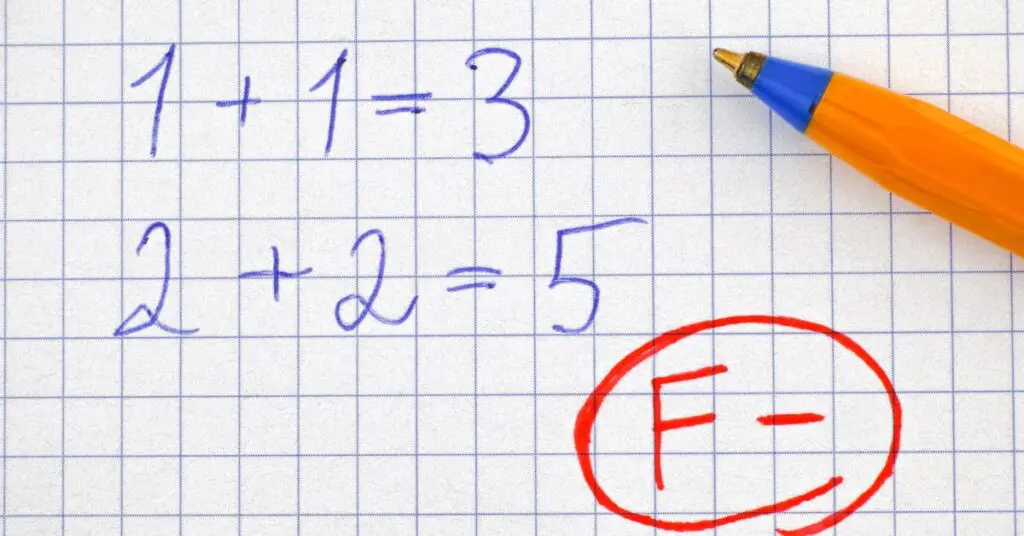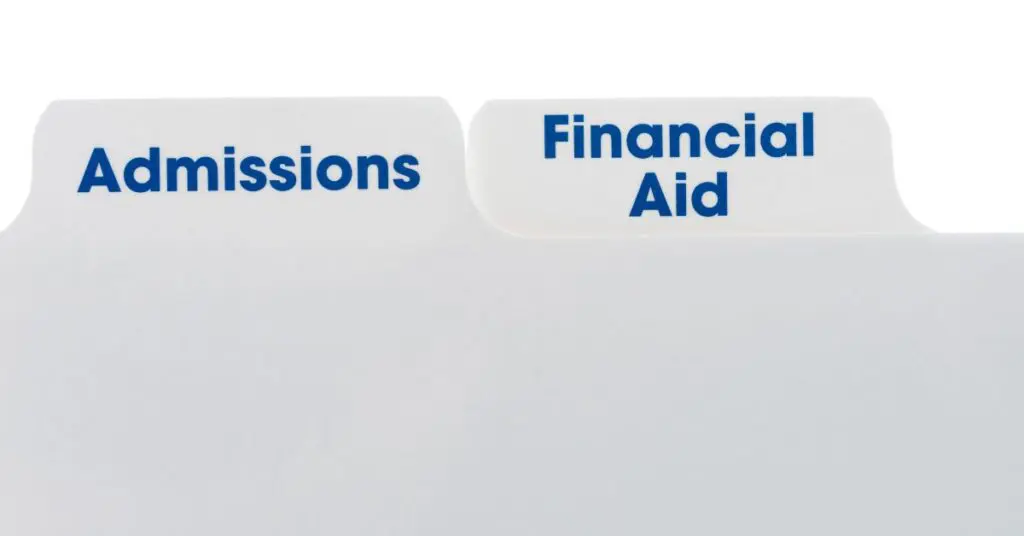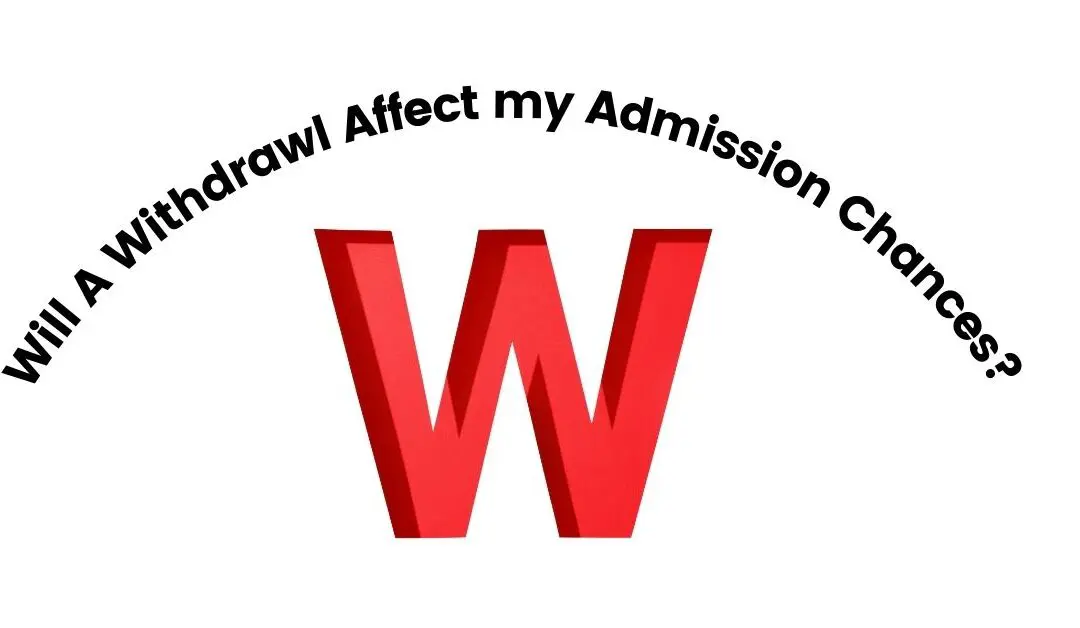Many students find themselves in a position where they are struggling in a course and considering withdrawal. It’s a tough decision to make because a W on transcript can affect your chances of admission, but sometimes it’s the best decision for your academic career. Let’s examine the pros and cons of withdrawing from a course so you can make an informed decision.

The Pros of Withdrawing From a Course
Some benefits to withdrawing from a course, even though it may not seem like it at first. The decision to withdraw from a course is highly individualized and subjective to the student’s personal needs.
For example, if a student withdrawals from a course that drops them below the 12-unit threshold, it could hurt their chances of reaching the 60 required semester units to transfer to a UC or CSU.
Nonetheless, withdrawing from a course can benefit students because it will protect their GPA, provide a second chance at achieving success in the course, and allow more time to be spent on other classes in which the student has more of a chance of succeeding.
Pro: A W on Transcript Protects Your GPA
First, if you withdraw from the course, you will not receive a grade for the course, which means that your GPA will not be affected.
This can be beneficial if you are struggling in the class and are worried about your GPA. It also prevents the course from being factored into your GPA in any way.
1. Pro: A “W” (Withdrawal) Provides a Second Chance at Success
Second, withdrawing from a course gives you the opportunity to retake it later and try again for a better grade. This can be helpful if you find that you really struggle with the material or have trouble keeping up with the workload.
In some cases, the decision to withdraw from a course is not linked to the inability to handle the rigor, but instead, is due to the overwhelming time commitment of other classes on your schedule that renders the student unable to devote enough time to the course and receive a grade mark that is indicative of the student’s actual acumen in the subject matter.
Related Reading: Using UC TAP for UC Transfer Admission Guarantee (TAG) Program
2. Pro: A “W” (Withdrawal) Allows for More Time to be Spent on Other Classes
In addition, withdrawing from the course may free up some time in your schedule to focus on other courses you are taking. Thus, it may become necessary to withdraw from a course to devote time to your other classes.
Students should speak with their college counselors and advisors to determine if withdrawing from a class is helpful to their specific situation and goals.
A “W” in one course has the potential to render success in others, which is something every student should take note of when making the decision to withdraw from a course.
3. Pro: A “W” (Withdrawal) is Better Than Failing
If you know you will struggle to pass a class, withdrawing is a better option than failing. Failing a class can negatively affect your academic record and future opportunities.
In addition, when universities look at a “W” on a transcript, they are more lenient than if there is a series of “F” grades. Some higher education systems have different policies when evaluating the presence of a W on a student’s transcripts.
The best way to avoid ambiguity is to consult with the higher education system you are transferring into (i.e., UC or CSU) and determine the appropriate action for a W on admission chances.

Failing a class damages your academic record and official grade point average (GPA), and it does not look appealing on a transcript (especially if multiple F’s exist).
4. Pro: A “W” (Withdrawal) Shows That You Tried
When you withdraw from a course, your transcript will show a W next to the course title. This indicates to employers and other schools that you did not complete the course, but it also shows that you made an effort.
This may seem fruitless, but in the end, a W in an upper-division Calculus or Statistics course demonstrates that you at least challenged yourself in taking the course.
The Cons of Withdrawing From a Course
While there are pros to withdrawing from a course, there are also some cons you should consider before making your decision.
Like everything else, students should comprehensively analyze their predicament and educational goals before deciding to withdraw or remain in a course.
Speak with your counselor and advisor to inquire about the impact of withdrawing or remaining in a certain course.
1. Con: A “W” (Withdrawal) Shows That you Could Not Handle the Course Rigor
First, as mentioned above, withdrawing from the course will result in a “W” on your transcript. This can give the impression that you cannot handle the coursework or give up when things get tough.
Higher education is not for everyone, and schools of higher education do not want to accept students that they believe will struggle or fail to graduate due to past academic precedent.
Even if other factors constituted the withdrawal, admission officers do not see anything other than the W. Some schools allow students to explain why they have a W on their transcript and the reasons behind the withdrawal.
2. Con: A “W” (Withdrawal) Need the Class to Graduate
In addition, withdrawing from the course means you will not receive credit for the course, which could affect your ability to graduate on time.

3. Con: Possible Impact on Financial Aid
A “W” on your college transcript could revoke your initial acceptance for financial grants and awards in California.
The California College Promise Grant guarantees tuition-free community college for all first-time California undergraduates who meet specific GPA and income requirements.
However, if a student fails to maintain at least a 2.0 GPA or accumulates two or more “W” grades, they will lose their eligibility for the program.
As a result, a “W” on your transcript could significantly affect your college career. If you are struggling in a class, you must speak with your professor or TA about your options.
With their help, you may be able to avoid a “W” on your transcript and maintain your eligibility for the California Golden State Promise.
4. Con: Potential Revocation of Admission Acceptance
If you were accepted into a UC or CSU, congratulations. Remember that the institution that accepted you will require you to submit a Transfer Academic Update for the coursework before the semester or quarter you are accepted.
In other words, if you were accepted to UCSD for the Fall of 2023, you will have to send the UCSD Admissions Office your transcripts for the Spring semester before enrolling.
A “W” on any of these courses could be devastating for students who needed the class to meet transfer requirements for UC or CSU institutions.
Likewise, a “W” does not offer college credit, and if you need the course to meet the threshold, you will have to find those credits elsewhere.
Other Questions
Is a “W” on Your Transcript Bad for Admissions Chances?
It depends on a multitude of factors. First, if the student has one or two W’s and no more, universities will typically allow that, and some would rarely question it.
Likewise, admissions officers are asked to review applications holistically, which means incorporating the totality of the student’s progress, achievements, and supplementary information provided in the application.
One or two W’s enables an admissions officer to do this but having multiple W’s really ties the admissions officers’ hands. Try to avoid more than two W’s and make sure your grades are adequate enough to support a high GPA even with the credit losses incurred by the W.

Students must always keep in mind that falling below the 12-unit threshold will eliminate their full-time status as a student, which can affect financial aid eligibility. At the end of the day, a W is better than a failing grade (in most situations).
The most important consideration when deciding to withdraw from a class is to identify whether withdrawing from the class affects your ability to graduate on time or meet the semester credits needed to complete the degree program.
The deadline to withdraw from a class differs at every institution, but it generally falls within the first few weeks of the course.
Letter grades are pivotal in acceptance or rejection notices, so taking a W can propel you above other students who are taking too many classes and can not handle the workload from their remaining classes.
Related Reading: Using UC TAP for UC Transfer Admission Guarantee (TAG) Program
Does a W Affect my Graduate School and Grad School Chances?
Much like undergraduate admissions, most schools note the amount of W’s on your transcript, including graduate schools (i.e., Medical School, Law School, etc). Whether or not the “W” will dictate an acceptance or rejection to the professional school is entirely unknown. Speak with the academic advisors at the medical school or other professional schools you are interested in to be absolutely sure that a W is allowed.
Still, students with several dropped classes can indicate other more serious issues like time management and academic probation considerations.
Is a W Bad for Transferring?
To put it simply, it will depend on how many Ws you have. For the most part, one or two withdrawals will not impact your admission decisions. However, more than one or two-course withdrawals are symbolic of a deeper issue. So to answer: is a W bad for transferring? No, it is not the end of your chances, but try to avoid having more than one.
Speak With an Academic Advisor
Speak with an academic advisor to understand the implication of a W. See if dropping a class will affect your financial aid.
Your academic advisor is the most important person to speak with regarding a withdrawal from a class because they better understand how one class withdrawal can impact your situation.
If you are unclear about how a W affects your generic course load, then make sure you speak with a higher education advisor or a counselor at the institution you are interested in.
Related: What Happens if You Mess Up in Community College?
The most important consideration is that you maintain an adequate course load that fulfills your full-time student status while keeping you on track to transfer successfully.
Suppose you fall below a specific course load unit limit. In that case, the school may have no choice but to deny your transfer admission because you were unable to maintain full-time student status (typically 12 units of coursework).
Conclusion
Withdrawing from a course is a big decision and one that should not be made lightly. There are pros and cons to withdrawing from a course; only you can decide if it is the right decision for you.
Be sure to consider all the factors involved before deciding to withdraw from a class. Make sure that by withdrawing from a class, you will not place yourself on academic probation or incur other significant penalties like major consideration, graduation requirements, and financial aid status. Above all, make the best choice for your academic career.





